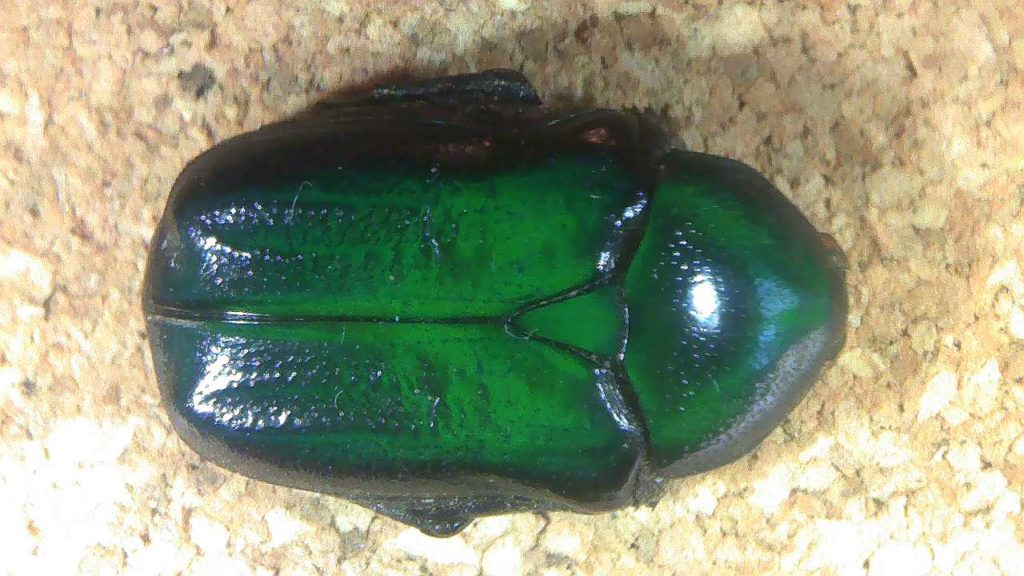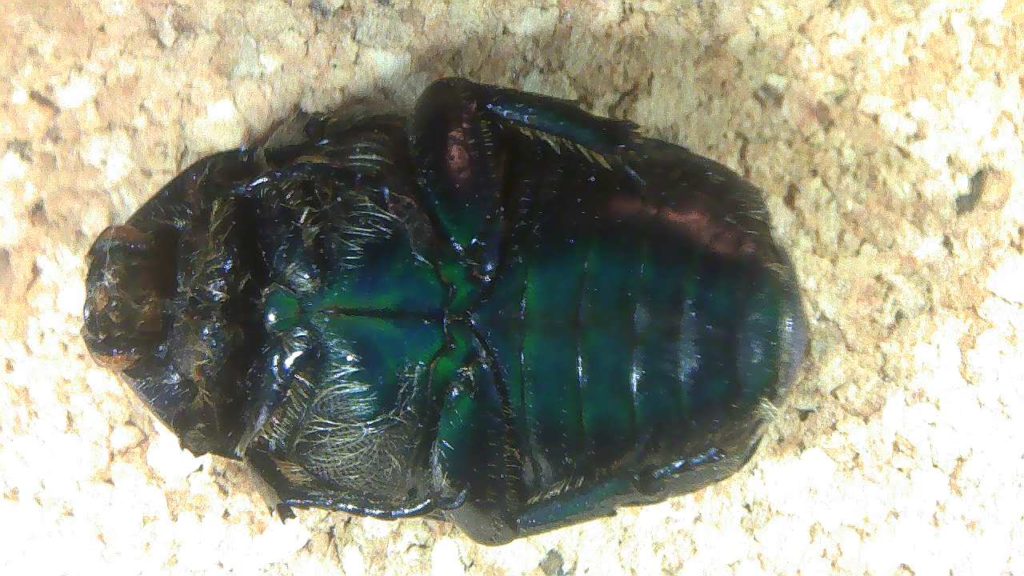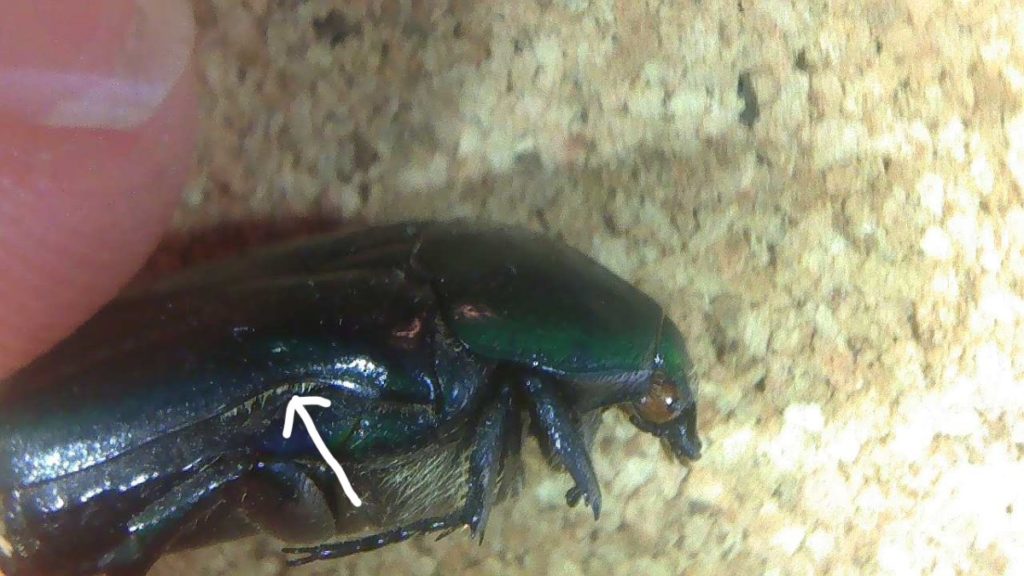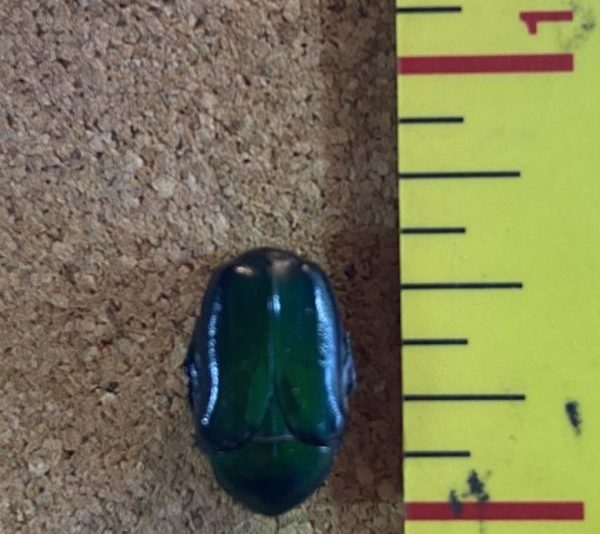If we don’t include single-celled organisms, then beetles are the most numerous and diverse group of living things on this planet. They make up about 40% of all insects. One out of every four animals on this planet is a beetle. In fact, there are more known species of beetles then there are all known species of plants!
Seeing as how they are so diverse, it should come as no surprise that we are blessed with an abundance of cool beetles here in the Sky Islands! In this post, we will break out the microscope to explore one of the beautiful beetles from my collection of found (already dead) insects: the Cathedral Vista Beetle, Euphoria monticola.

The deeply iridescent green of E. monticola gives the impression that one is looking right into the heart of an emerald.
Euphoria monticola (previously known as E. fulgida holochloris) is a member of the Scarab family of beetles, and within that group, the Flower Chafer or Flower Scarab subfamily. These beetles are active during the day and can be seen flying to flowers to feed on nectar, pollen, and in some cases the flower’s petals or the sap where plants have received a wound of some sort. Although they can occasionally damage flowers, these beetles also act as pollinators. As larvae the grubs also play an important role in the ecosystem by feeding on decomposing organic materials.

The fine hairs and spikes found on the underside of this beetle can hold pollen as it flies from flower to flower to feed, increasing the chance of successful pollination for the plant.
Interestingly, like the other Flower Chafers, the Cathedral Vista Beetle flies with its wing covers closed and is thought to be a mimic of bees—in this case, the beetle perhaps mimics our large black/iridescent colored carpenter bees. The fact that these beetles are such strong fliers, with a similar buzzing sound to their flight, helps complete the mimicry.

This upswept spot along the edge of the Cathedral Vista Beetle’s elytron (hardened first wing or wing cover) lets the wing covers remain closed while still allowing for the range of motion needed by the hind wing in flight.
If you want to see one of these gorgeous creatures in the wild, you could try to find the males on patrol for females as described by Margarethe Brummermann in her blog post on Euphoria beetles (see references). Alternately, you could keep an eye on flowering plants in the Sky Island ranges near the border with Mexico (this one came from the Huachucas) during the summer months, and make sure to double check any of the carpenter bees you see flying by. Good luck and have fun!
References:
Eaton, Eric R., and Kaufman, Kenn. 2007. Kaufman Field Guide to Insects of North America. New York: Houghton Mifflin Company.
Silberglied, R.E. and T. Eisner. 1969. “Mimicry of Hymenoptera by beetles with unconventional flight.” Science 163:486-488. DOI: 10.1126/science.163.3866.486
Brummermann, Margarethe. 2012. “The Euphoria species of Arizona” [Blog post]. Retrieved from Arizona: Beetles, Bugs, Birds and more: The Euphoria species of Arizona, USA
BugGuide (n.d.) “Species Euphoria monticola: Info.” Retrieved December 23, 202, from Species Euphoria monticola – BugGuide.net


